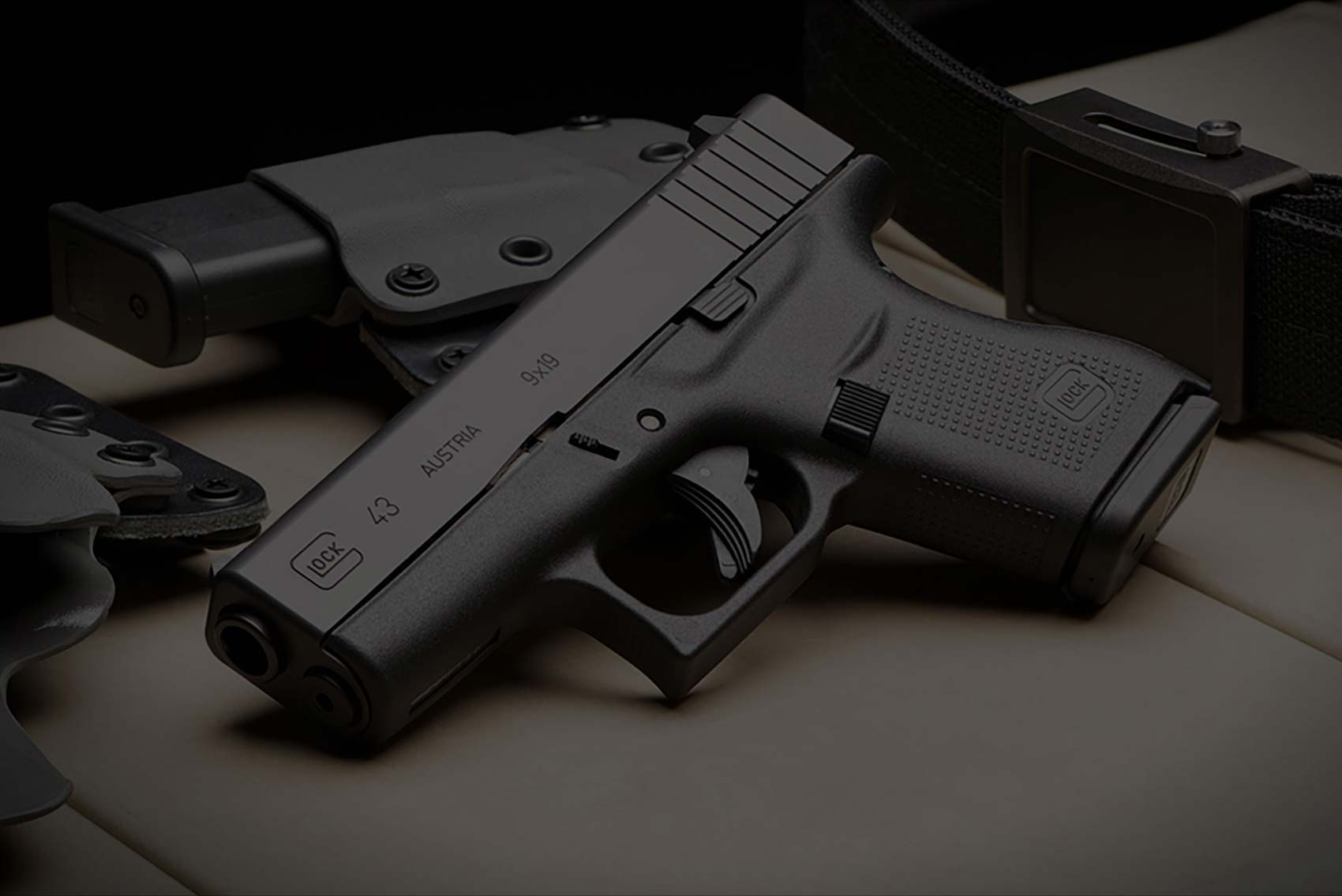9mm is an immensely popular handgun caliber, but that doesn’t make choosing the right EDC (Every Day Carry) weapon any easier. In fact, it might even make things more difficult than they’d otherwise be; the market is flooded with options for every kind of user imaginable: law enforcement officers, people who carry every day, those who simply want something they’ll take with them when shooting; etc. That could include those who prefer comfort when shooting, those who want the smallest CCW (Concealed Carry Weapon) possible, or even people who may not own any other guns, but who just wanted one and went with 9mm because it was the only caliber they knew. Basically, there are a lot of options out there.
Not to worry. Despite the multitude of options, there are certainly concealed carry options that stand out from the rest of the pack, based on their features, shooting experience, light weight, or just pure craftsmanship. Here we’ve accumulated 8 of the very best CCW oriented 9mm handguns on the market today, giving a short review of each and detailing the pros and cons you should know about. If you’re new to this, or don’t know what to look for, here are the 8 best single-stack subcompact 9mm’s to check out.
Reviews
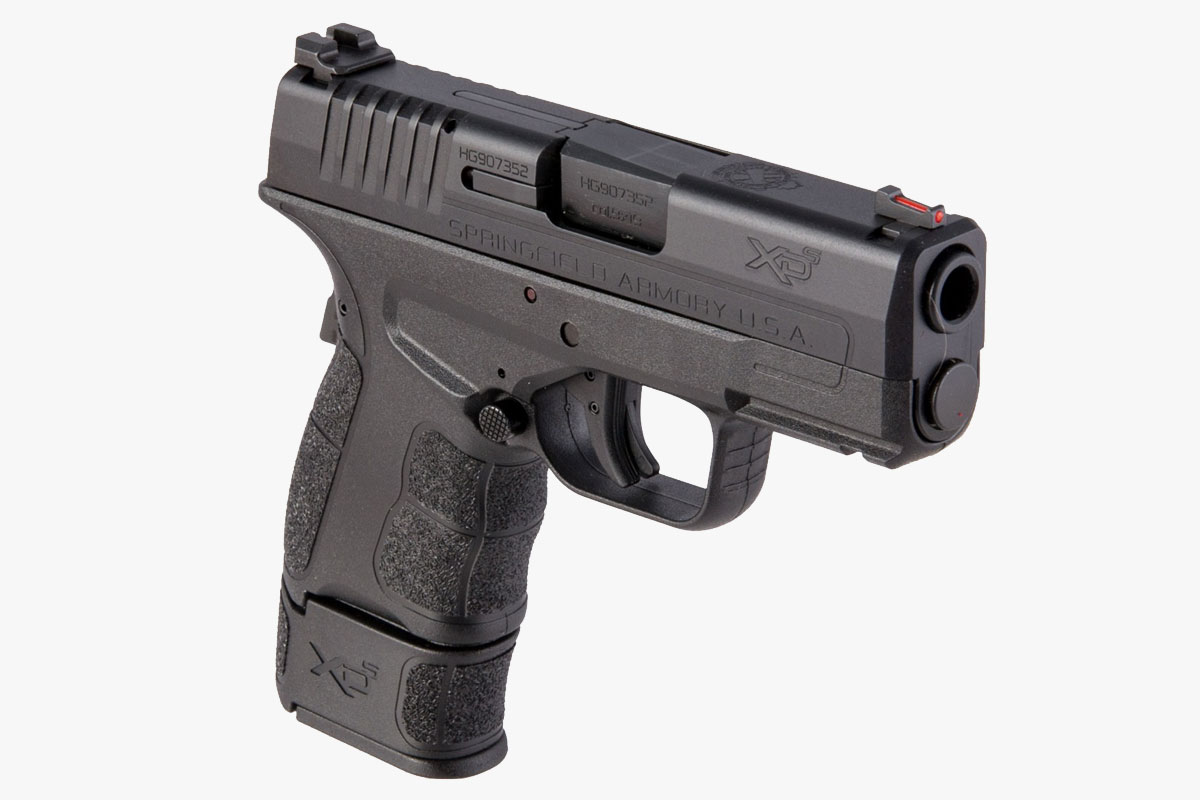 Springfield Armory XD-S Mod.2 3.3”
Springfield Armory XD-S Mod.2 3.3”
A little brother to Springfield Armory’s already very popular, full-sized XD series, The XD-S is a subcompact, single-stack line of pistols for concealed carry. They come in .45 ACP as well, but for the purposes of this article we’ll be focusing on the 9mm model, which is even smaller and slimmer.
It’s a pretty svelte design; the 9mm caliber means Springfield Armory was able to turn this frame in at less than an inch wide (.975”); which is great for anybody who tends to wear tighter-fitting clothes or doesn’t have much space to store their CCW. The smallest barrel available, the 3.3”, is also great for portability. If you want something a little more robust, however, there’s a 4” barrel option available.
The XD-S weighs in at 21.5oz, which is very carryable, but not the lightest on this list. It’s a well-engineered pistol that’s known for its reliability and comfortable design, so you’re trading a bit of weight for a better shooting experience. Shooters who want the absolutely lightest/smallest weapon they can buy should look elsewhere, but for those who don’t mind the tradeoff, the XD-S has some of the best ergonomics in the game.
The normal magazine holds 7 rounds and extends the grip slightly, allowing you to rest your pinky or ring finger on a small outcropping, while an extended 9-round magazine is also available.
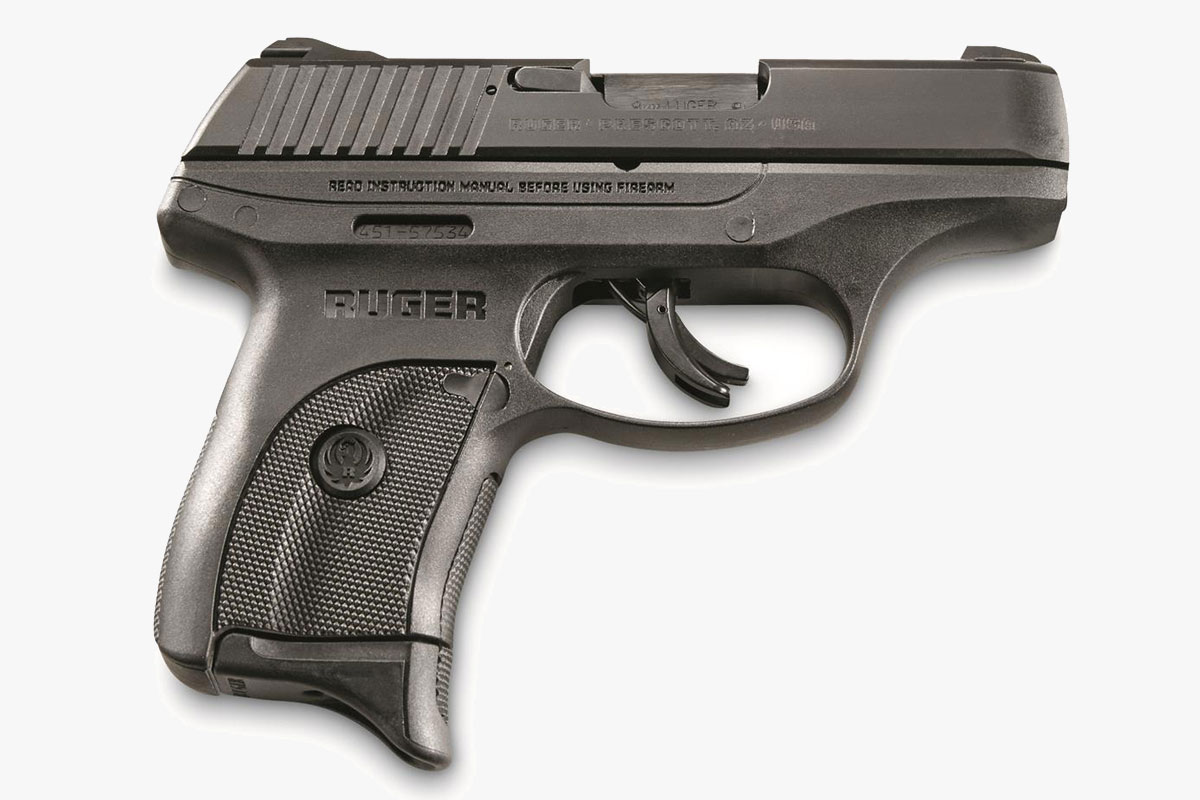 Ruger LC9S
Ruger LC9S
One of the most popular options on the concealed carry market, the Ruger LC9S gets a lot of respect despite its middle of the road price and feature set. That’s for one simple reason: it just works well.
It’s not necessarily the most feature-rich or comfortable pistol on this list to shoot; the grip and actually the entire gun are both rather thin, at .90”. And at 17.2oz, the LC9S is lighter than even many other subcompact options out there. The barrel is 3.12” long and gun’s overall length is 6”, with a capacity of 7+1.
In other words, the LC9S is a true subcompact; you won’t find many additions for comfort or shooting experience here, as the goal is to keep weight and size down as much as possible. The dovetailed sights can be replaced, but the factory ones work great as they come. In addition, there are a couple of different safety options available depending on the specific model you buy, like a thumb/magazine safety.
What you will find with the LC9S, though, is a solid mechanism and decent accuracy, especially in a pistol this small. This is a no-frills design, but it’s stayed more or less popular since it came out. The same things can’t necessarily be said for all subcompact 9mm CCW pistols.
You may also be interested in some of these top 10mm handguns and pistols from our list. Check them out.
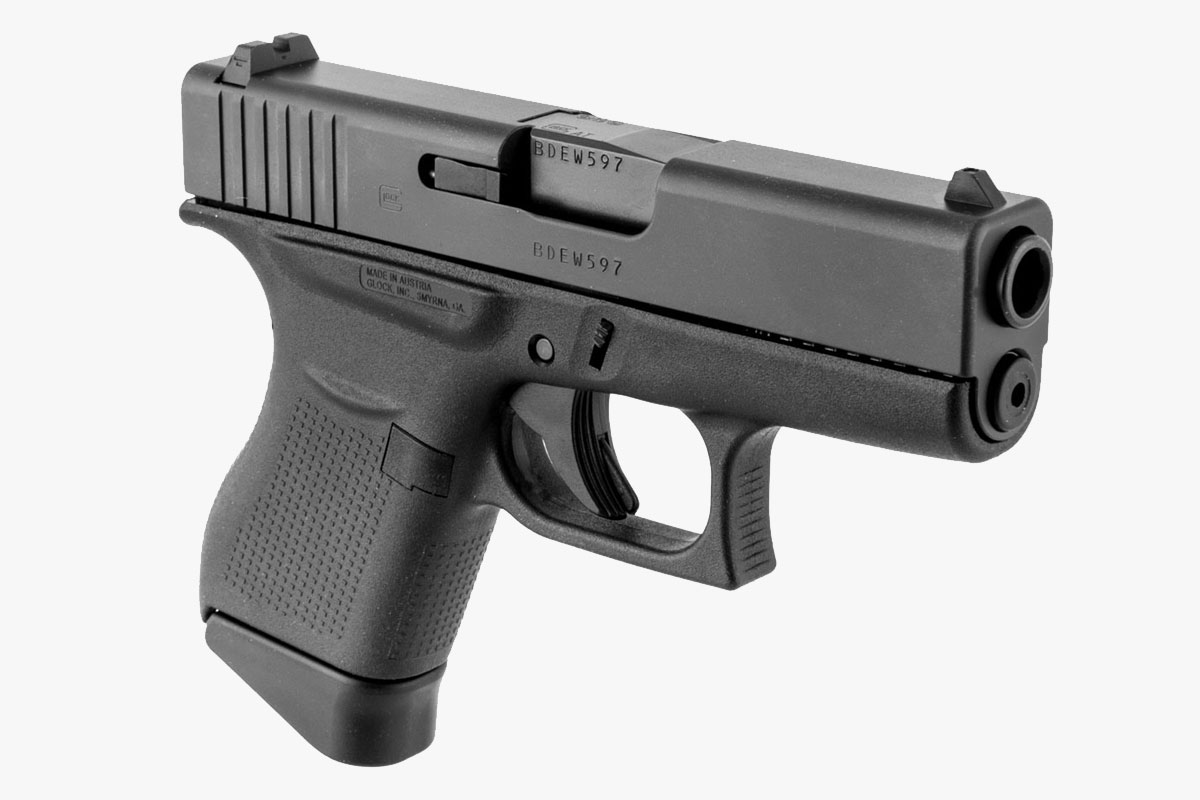 Glock 43
Glock 43
One of Glock’s greatest advantages is consistency. Detractors say their pistols are boring, unergonomic, or don’t have as many features as competitors. All that may be true, but: if you’ve used one Glock, you can likely use all of them just as easily. Therein lies much of the appeal of the Glock 43.
Glock has had a 9mm double-stack handgun for years, but it took a long time for the 43 to come out — single-stack 9mm CCW options had already been picking up steam for years. Thankfully, the G43 was worth the wait, especially for previous Glock users. It will feel immediately at home in the hands of anybody’s who’s used one of Glock’s larger models before.
At 21oz with a magazine, it’s slightly heavier than some of the most compact options on this list. The standard magazine capacity is 6 rounds and the barrel length is 3.41”. The handgun’s overall width is just over an inch at 1.06”. These specs mean that the Glock 43, in terms of raw size and weight, is essentially a middle-of-the-road option.
It’s not the lightest single-stack subcompact you can find by far, but it’s also not the heaviest or the largest. For fans of standard Glock reliability and ergonomics, the 43 is a great option.
Check out these best-rated .22 pistols on the market, as well, and pick the right one for yourself.
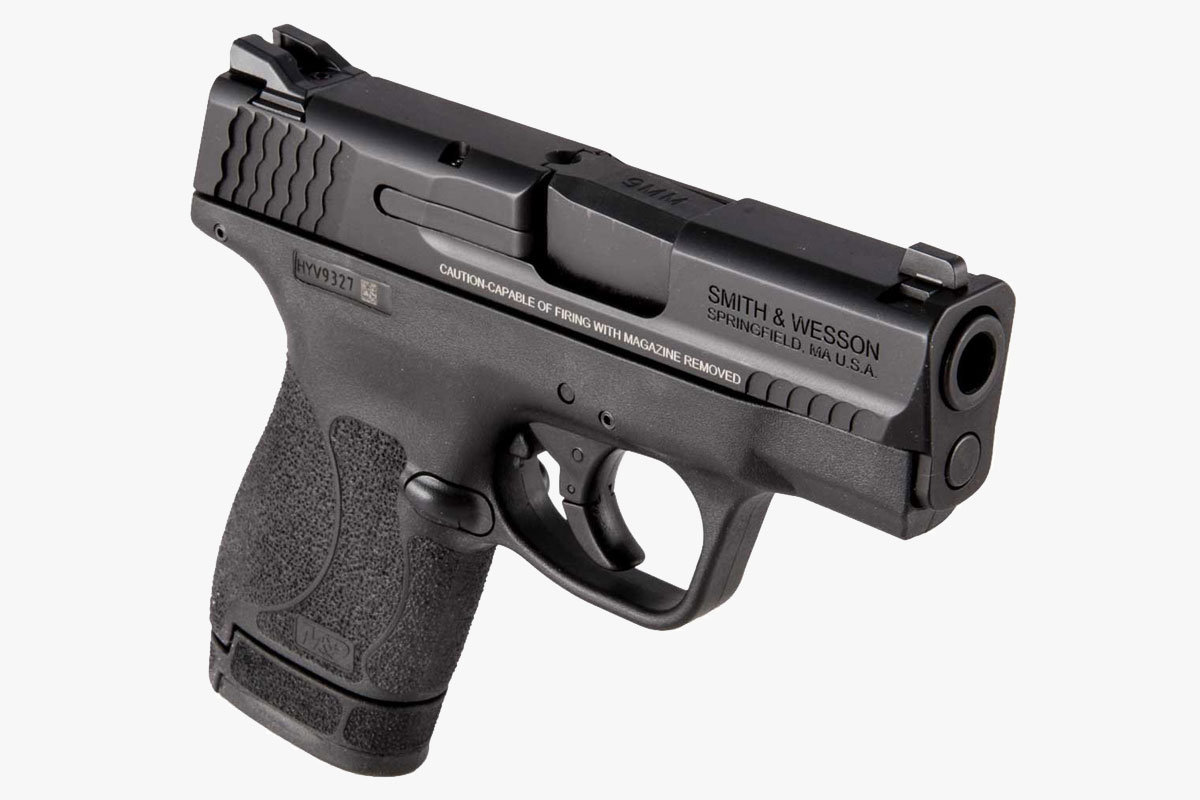 Smith & Wesson M&P9 Shield
Smith & Wesson M&P9 Shield
Another very popular pistol, the M&P9 shield is a downsized version of Smith and Wesson’s full-sized Military & Police line, which is popular among law enforcement.
The M&P9 Shield’s Capacity is 7+1 with the standard flush mag and 8+1 with the extended magazine. With an overall length of 6.1” and a barrel length of 3.1”, this one is on the smaller side even for subcompacts. At 20.8oz, it’s neither particularly light nor heavy. The Shield includes a hinged trigger safety, as well as an optional thumb safety on some models.
Looking simply at the M&P9’s specifications, you could be forgiven for thinking it’s a choice that’s average at best. Yet it’s probably one of Smith and Wesson’s best-selling pistols, along with its .45 ACP and .40 S&W counterparts. Why is that?
Much like the Springfield XD-S above, the Smith and Wesson M&P9 Shield offers a superb shooting experience. It’s reliable and doesn’t stick on different kinds of ammo very often. Furthermore, the grip has the perfect amount of texture, the sights are accurate but don’t obscure your vision, and the shooting angle is almost perfect for drawing and looking down the sights in a smooth fashion. This is one CCW that prioritizes comfort and a good shooting experience ever so slightly over weight and size; making that tradeoff will be your decision.
You may also be interested in the best AR-15 pistols from our list. Don’t miss them.
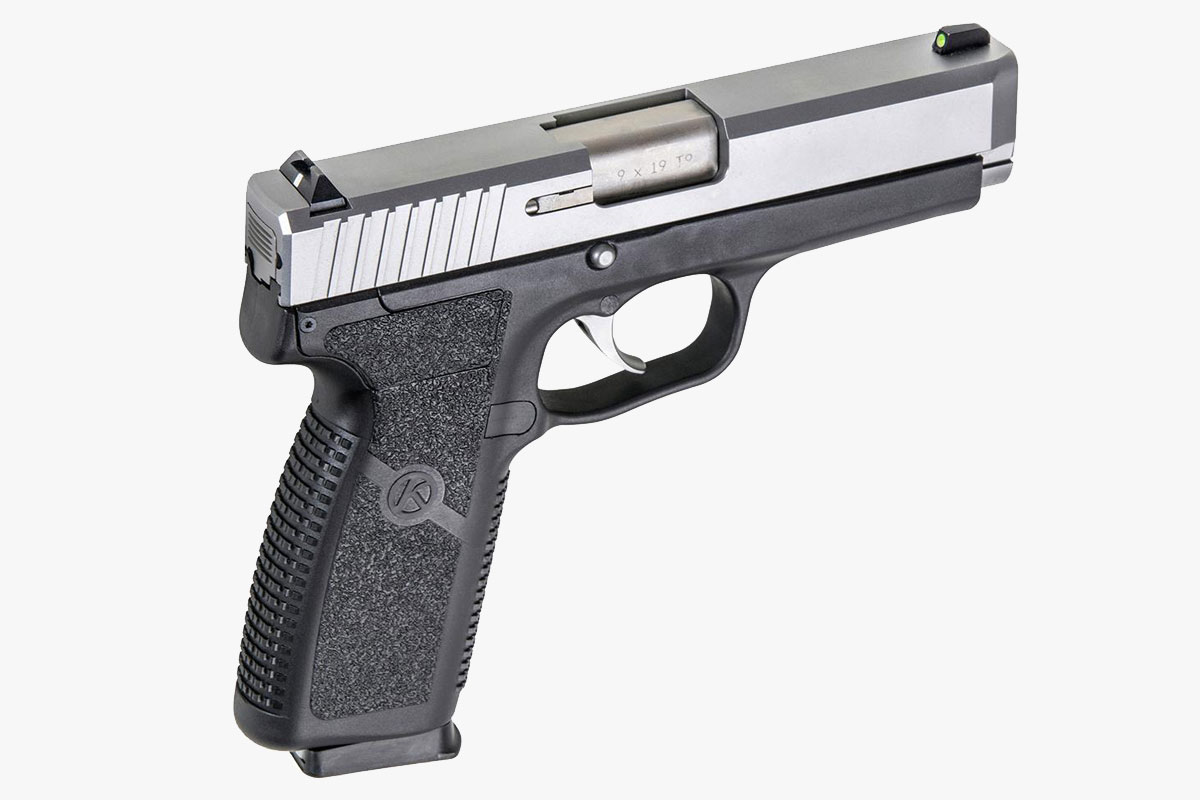 Kahr CM9
Kahr CM9
This petite offering from Kahr is the one we’re most likely to recommend to users who need to prioritize size and weight at all costs. The CM9 is practically pocketable. It has a 3.0” barrel, a slide width of .90”, and weighs in at 14oz without the magazine. Even for a subcompact 9mm, those are impressive specs.
The CM9 doesn’t have as much capacity as some of the other subcompacts on this list, at 6 in the standard flush magazine (+1 in the chamber). Then again, that’s to be expected given its small size. It also has a slightly long trigger pull, though the action is fairly smooth to make up for it.
Other than that, there’s not too much to say about the Kahr CM9. It’s so small that you could easily carry it everywhere with you, or even forget you have it on your person. It isn’t as feature-rich or ergonomic as heavier or bigger subcompacts, but it makes up for that in terms of size and simply how carryable it is. It has a bit of competition from the Ruger LC9S, but both are great if you need a CCW for true everyday usage; something reliable but unobtrusive, that you actually will take with you when you leave the house in the morning.
For more quality firearms like this, check out our selection of the best-selling .380 pistols.
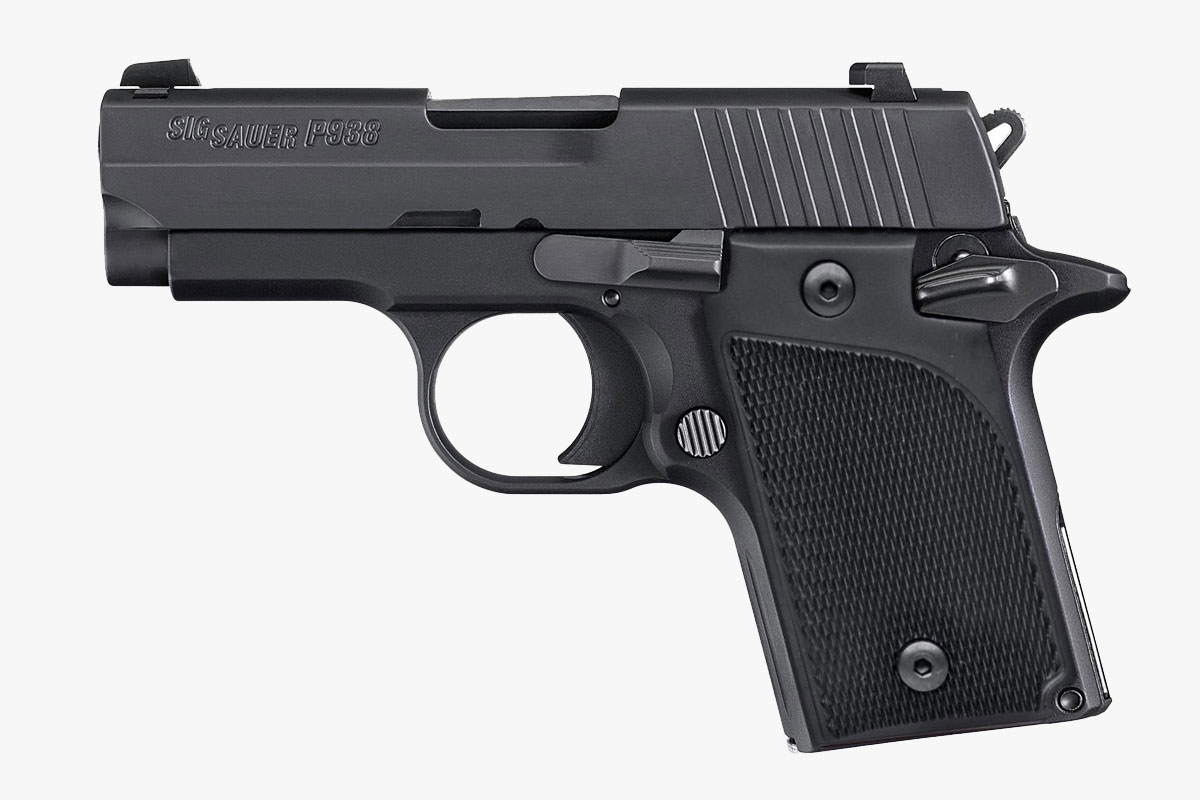 Sig Sauer P938
Sig Sauer P938
Unlike most of the options on this list, the Sig P938 is actually single-action. That means you’ll need to carry it either with the hammer cocked and the thumb safety on, or without a bullet in a chamber, requiring you to rack the slide before use.
That sounds like a hassle, but this style has a lot to offer, especially for those who are used to 1911-style handguns. The miniature P938 is essentially a scaled-down version of a 1911 in 9mm. The controls are simple and the P938 is easy both to operate and to take down. Furthermore, the single-action trigger has a much shorter and smoother pull than comparable double-action subcompacts.
The barrel is 3” long, with an overall length of just under 6 inches (5.9”). Though the width is just over an inch at 1.1”, the P938 only weighs 16 ounces, which is considerably lighter than some of the other subcompact pistols here. The flush magazine fits 6 rounds.
Like many of SIG’s other options, the P938 isn’t particularly flashy or jam-packed with features and affordances. It’s simply well-designed and it more or less just works, reliably and consistently. The main selling point is that single-action, 1911-style design; it sets the P938 apart from every other subcompact on this list.
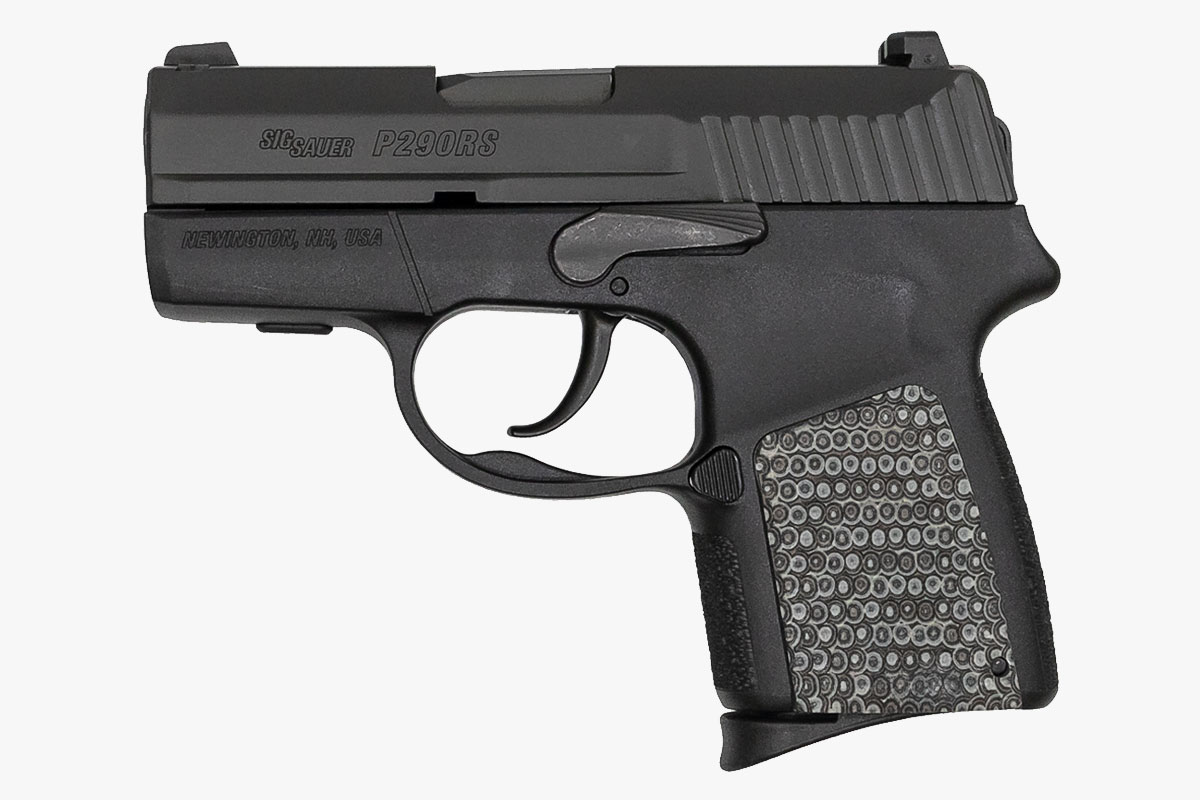 Sig Sauer P290RS
Sig Sauer P290RS
Though discontinued in 2017, the P290RS can still be found, especially used for a discount. Such buys are usually pretty wonderful deals, as the P290RS is a great single-stack option despite its age.
The P290RS is double-action-only and has a polymer frame. It comes with a six-round magazine and an extended 8-round magazine. The barrel comes in at just under 3 inches (2.9”) and the overall length is 5.5”. The handgun weighs 16.4oz. Despite its small size, it comes with full-size sights, which makes it perfect for those who are slightly vision-impaired or have trouble seeing at night. The trigger pull is a bit on the long side, as the ‘RS’ designation means this handgun is exclusively double-action. That said, the trigger pull is smooth and consistent despite its length.
If you can find it, the P290RS is a great everyday carry option. (Sidenote: its replacement, the Sig Sauer P365, was not included on this list, as it’s a double-stack 9mm, but the P365 is actually relatively thin and also a great choice, if you’re looking for something newer.)
Our guide to the best concealed carry revolvers offers more great firearms like this. Check them out.
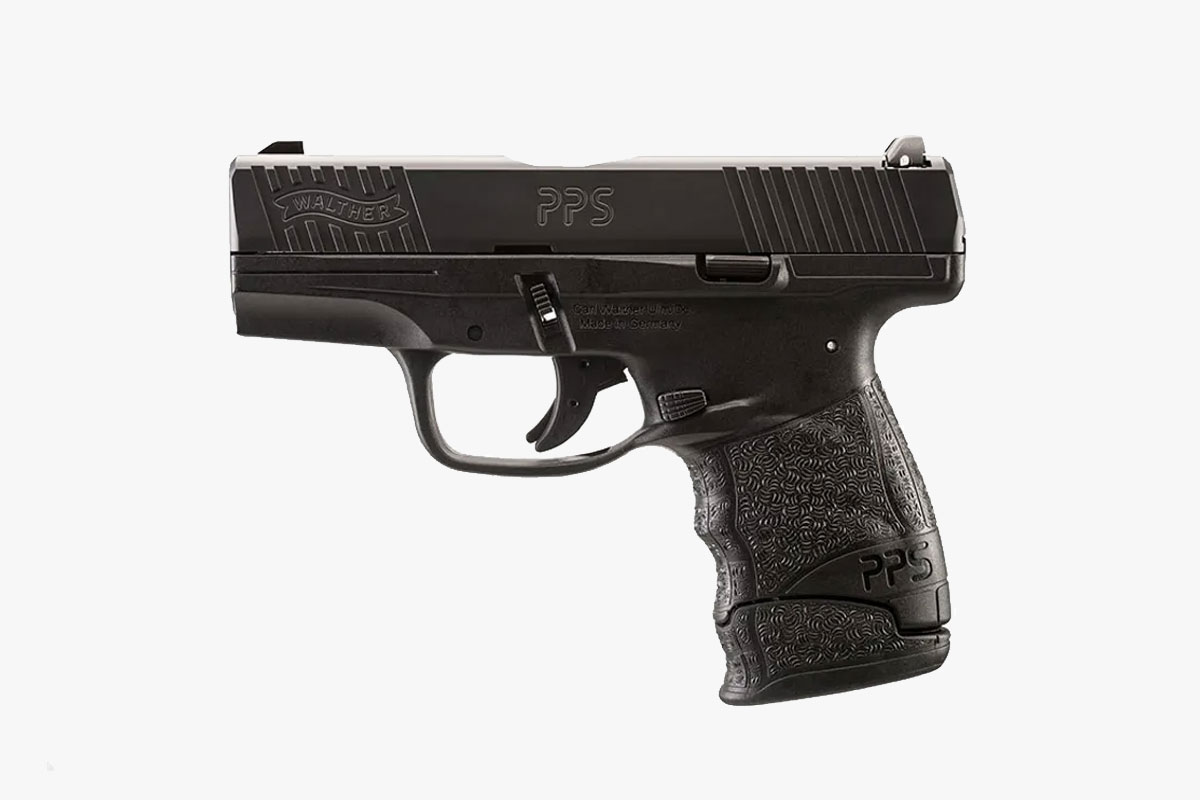 Walther PPS M2
Walther PPS M2
The Walther PPS M2 comes in with a barrel length of 3.19”, an overall length of 6.3”, a width of 1”, and an unloaded weight of 21.1oz. It’s not the lightest CCW option, but it hits all the normal benchmarks for length and width, which means it’s more than acceptable for CCW; the PPS M2 is no heavier or larger than, say, the Springfield Armory XD-S or the Smith & Wesson M&P9 Shield.
The PPS M2 is thinner than the original PPS, and it has a slightly different grip pattern. What makes this gun great is its ergonomics: as you’d expect from Walther, it’s easy and very comfortable to handle and shoot for a subcompact pistol. A lower-profile, slightly more curved frame from the original PPS make it easier to both hold and carry.
Of course, the PPS M2 is more comfortable to shoot than lighter options, but you’re making a tradeoff for that shootability.
Benefits of a Single-Stack Subcompact 9mm
As their name would suggest, single-stack pistols only have a single “stack” of bullets in the magazine. That’s in opposition to double-stack guns, which stack bullets on two alternating tracks; it’s like a single upwards escalator in a small building versus one that has two parallel tracks going upwards, like you might find at a particularly large mall or shopping center. As such, single-stack handguns carry less ammo than their double-stack counterparts. You’ll have to reload more frequently.
But even though they have less capacity, single-stack models come with one very important benefit in terms of concealed carry, particularly on a daily basis: size and weight. Single stack options are often lighter and much thinner than double-stack handguns, making them a lot easier and more convenient to carry around, especially if you’re not a fan of baggy clothing.
The same goes for subcompacts. In comparison with compact or full-size handguns, subcompacts are smaller, lighter, and often have shorter barrels and grips for easier carry. These features are not without their own drawbacks; subcompact handguns are often less comfortable to shoot than full-size handguns, especially in powerful calibers. They also may not be able to hold as much ammunition or have as many features.
Finally, 9mm is a great all-around caliber for concealed carry. It’s not as heavy or bulky as more powerful calibers like .40 S&W or .45 ACP, and gives you more rounds per magazine. But it’s not too weak, either; 9mm is more powerful than .380 ACP or .22 LR, giving it adequate stopping power in an emergency situation. If you prize portability then you can go down to .380ACP, or if you prize power then you can move up to .40S&W, but 9mm is a perfect middle ground for users who want a little bit of both.
Conclusion
Once upon a time, there wasn’t a huge market for slim, self-defense and concealed carry-oriented single stack 9mm pistols. Shooters looking for CCW went down to .380ACP, and 9mm was reserved for full-size handguns. Nowadays, however, 9mm is one of the best options available if you’re looking for self-defense potential. It’s powerful, but not too powerful to be used in small, easily-carried firearms. It has stopping power, but recoil isn’t totally unmanageable. It allows for a decent amount of capacity in a magazine.
Furthermore, the best part is: there are a plethora of reliable, slim, single-stack 9mm options out there. While you certainly can go wrong with some choices, by now there are many good firearms in this category to satisfy everybody from the average consumer to law enforcement officers who need a backup.
You could choose something a little on the heavier side that offers increased comfort, accuracy and ammunition capacity, if you’re a discerning shooter or someone who doesn’t mind a couple of extra ounces. Or, if you often wear tight clothing or carry a small bag, you could go for portability at all costs and get a handgun that will literally fit in your pocket. There are pros and cons to either style of subcompact, but either way, it will still be easier to concealed carry than a regular compact or full-sized handgun.
No matter what choice you make, however, always remember to practice good safety measures, whether while at the range or while carrying — doing anything less is downright irresponsible. With that said, good luck and happy shooting!
